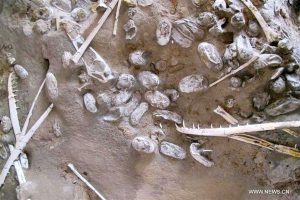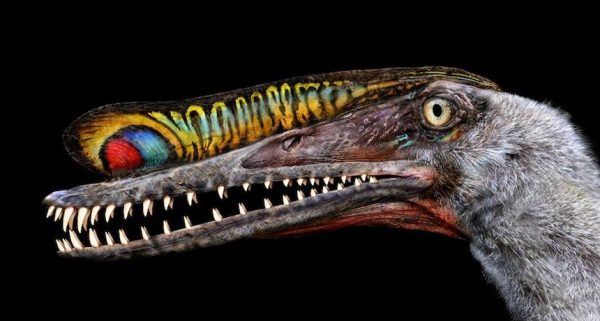In a groundbreaking discovery, scientists in China have unearthed a treasure trove of 215 fossilized pterosaur eggs, shedding light on the early development of these winged reptiles that coexisted with dinosaurs.

The findings, led by vertebrate paleontologist Xiaolin Wang of the Chinese Academy of Sciences in Beijing, include at least 16 partial embryos, some remarkably preserved in 3-D. The eggs belonged to a single species, Hamipterus tianshanensis, and date back to the early Cretaceous Period, approximately 120 million years ago.
Pterosaur eggs are known for their soft, thin outer shells, differing from the hard casings of dinosaur, bird, and crocodile eggs. This unique feature, akin to modern-day lizards, often results in flattened preservation. Previous discoveries of pterosaur eggs were scarce, making this find of over 200 eggs a monumental breakthrough.

The eggs, found in a 3-square-meter block of sandstone in northwestern China, were not in their original nesting site. Instead, they were jumbled and deformed, likely transported by a flood during a storm.
Rapid burial by sand and sediment preserved the soft eggs, preventing decomposition. Computerized tomography scans of the eggs’ internal contents revealed 3-D-preserved embryos.

The two best-preserved embryos offered a fascinating insight into pterosaur development. The deltopectoral crest, a crucial part of the wing bone, was not fully developed in the embryos, even in what researchers interpret as nearly term.
Conversely, the femur (leg bone) was well-developed. This suggests that hatchlings could walk but not fly at birth, possibly requiring parental care for feeding.

While caution is warranted in interpreting such findings, the large number of eggs enables researchers to make quantitative measurements, providing insights into egg sizes and shapes and offering a glimpse into the variation in animal size.
Ongoing research aims to further study these eggs and others recently discovered at the site, opening new avenues of understanding the fascinating world of pterosaurs and their reproductive strategies.






